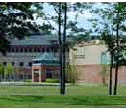



















|

|
| Particle Adhesion | |
| Van der Waals Force | JKR and Other Adhesion Models | Particle Adhesion & Removal | Effects of Charge | Effect of Humidity | Ultrasonic and Megasonic Cleaning | |


|
|
Effects of Charge Summary of Key Points Particles are attracted to substrates (or other particles) via certain types of interactions. These interactions create stresses between the materials. These stresses, in turn, create strains that may be large or small, elastic or plastic.
The JKR model is the underlying theory on which most of our present understanding of adhesion is based. This presentation will focus on particle adhesion.However, just as the JKR theory describes adhesion between macroscopic bodies, the concepts presented can be readily generalized to other situations. |


|